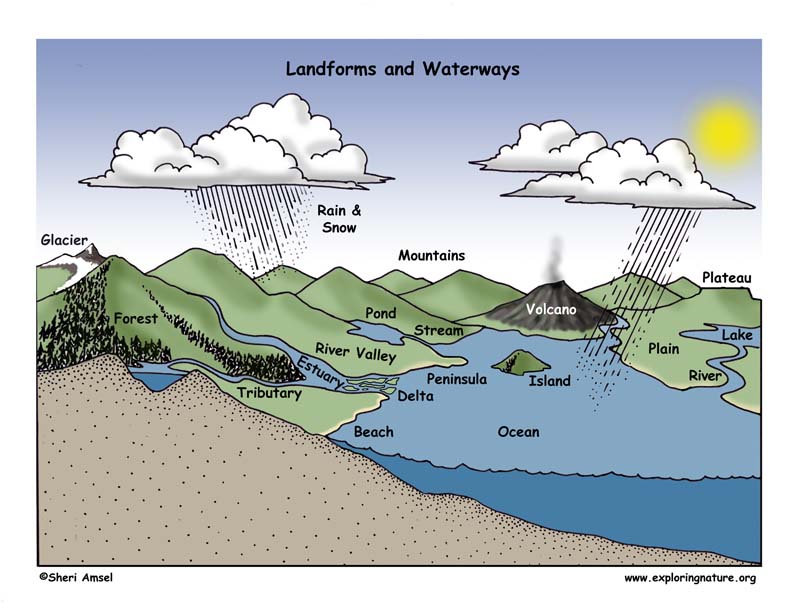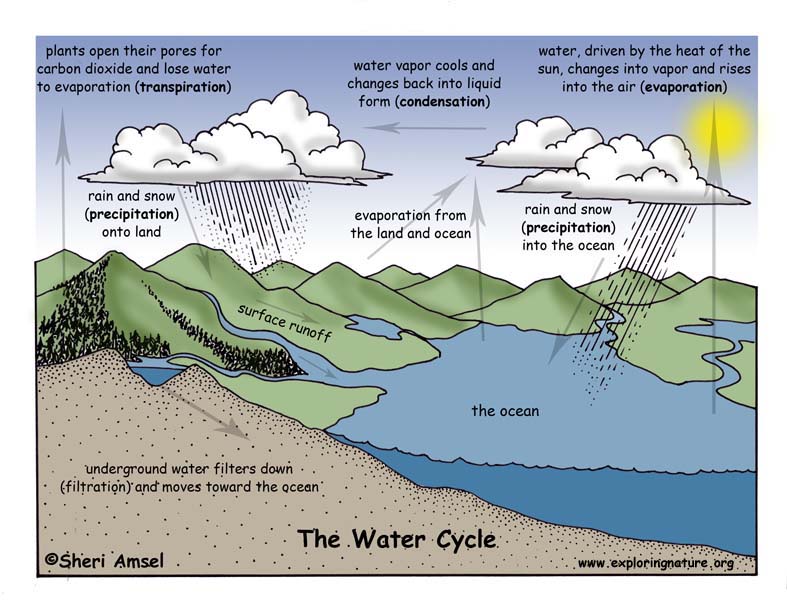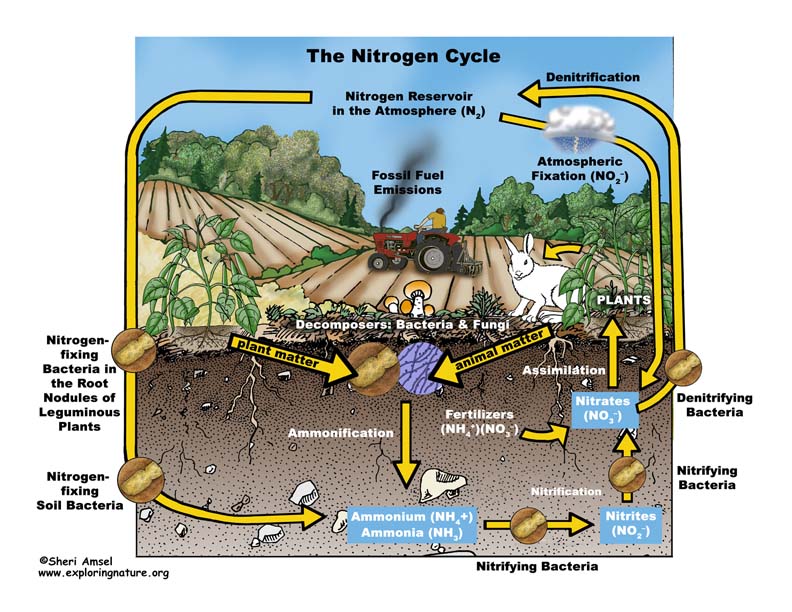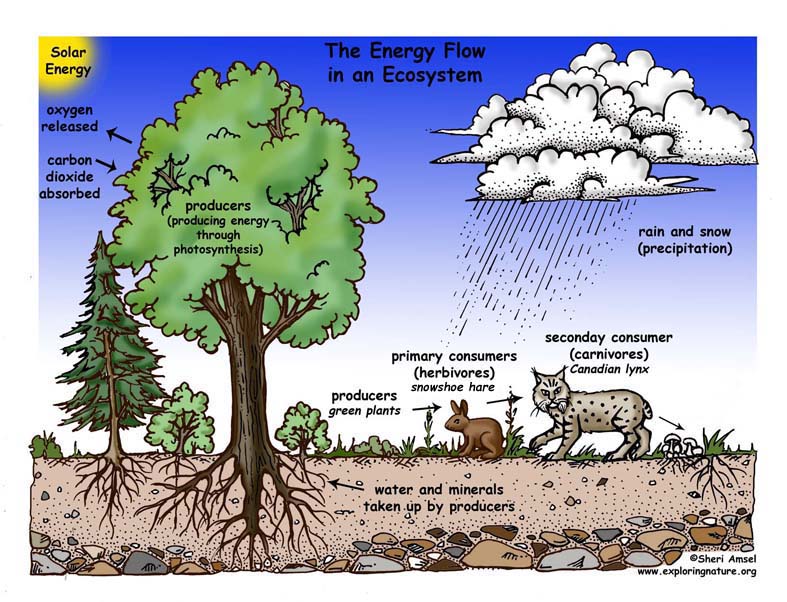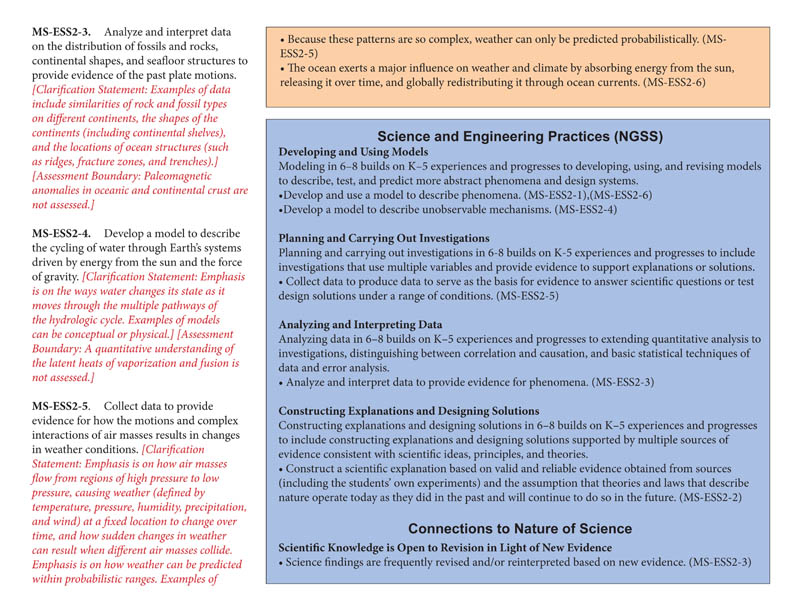

_________________________________________________________________________________________________________________________________________________________
Disciplinary Core Ideas
SS1.C: The History of Planet Earth
• Tectonic processes continually generate new ocean sea floor at ridges and destroy old sea floor at trenches. (HS.ESS1.C GBE),(secondary to MS-ESS2-3)
ESS2.A: Earth’s Materials and Systems
• All Earth processes are the result of energy flowing and matter cycling within and among the planet’s systems. This energy is derived from the sun and Earth’s hot interior. The energy that flows and matter that cycles produce chemical and physical changes in Earth’s materials and living organisms. (MS-ESS2-1)
• The planet’s systems interact over scales that range from microscopic to global in size, and they operate over fractions of a second to billions of years. These interactions have shaped Earth’s history and will determine its future. (MS-ESS2-2)
ESS2.B: Plate Tectonics and Large-Scale System Interactions
• Maps of ancient land and water patterns, based on investigations of rocks and fossils, make clear how Earth’s plates have moved great distances, collided, and spread apart. (MS-ESS2-3)
ESS2.C: The Roles of Water in Earth’s Surface Processes
• Water continually cycles among land, ocean, and atmosphere via transpiration, evaporation, condensation and crystallization, and precipitation, as well as downhill flows on land. (MS-ESS2-4)
• The complex patterns of the changes and the movement of water in the atmosphere, determined by winds, landforms, and ocean temperatures and currents, are major determinants of local weather patterns. (MS-ESS2-5)
• Global movements of water and its changes in form are propelled by sunlight and gravity. (MS-ESS2-4)
• Variations in density due to variations in temperature and salinity drive a global pattern of interconnected ocean currents. (MS-ESS2-6)
• Water’s movements—both on the land and underground—cause weathering and erosion, which change the land’s surface features and create underground formations. (MS-ESS2-2)
ESS2.D: Weather and Climate
• Weather and climate are influenced by interactions involving sunlight, the ocean, the atmosphere, ice, landforms, and living things. These interactions vary with latitude, altitude, and local and regional geography, all of which can affect oceanic and atmospheric flow patterns. (MS-ESS2-6)
• Because these patterns are so complex, weather can only be predicted probabilistically. (MS-ESS2-5)
• The ocean exerts a major influence on weather and climate by absorbing energy from the sun, releasing it over time, and globally redistributing it through ocean currents. (MS-ESS2-6)
_________________________________________________________________________________________________________________________________________________________
Use the Template and Resource Links to Fulfill NGSS
l. Goals:
Essential Questions:
ll. Introductory Activities to Assess Prior Knowledge
A. Simple Activities - that assess students’ understanding of landforms, Earth's cycling of materials.
Water Cycle - Fill in the Blank Quiz
Landforms and Waterways Vocabulary Matching
B. Brainstorming Session
Question: What are some Earth cycles you know about?
1. Break students down into groups of 3-4.
2. Ask students to generate a list of the different Earth cycles they know of and briefly decribe of what each cycle consists.
3. Discuss
lll. New Knowledge - Text
A. Read about how the tectonic process changes the Earth's surface.
B. Read about the many ways the Earth cycles materials.
Water Cycle
Water Cycle - Multiple Choice Test
Nitrogen Cycle Text and Assessment
Oxygen Cycle Description and Assessment
Food Webs - The Nutrient Cycle
Nutrient Cycle - Multiple Choice Test
C. Read about the different types of landforms and how the sun's energy warms the Earth.
Landforms and Waterways
Landforms and Waterways Definitions Matching
D. Read about weather patterns and ocean currents and how they affect the Earth's weather and climate.
Examples of Models (depicts the concept expressed in the reading):
Ask students to look at the models of the water cycle, nitrogen cycle and nutrient cycle and explain how each illustrates the concept.
Inquiry related to Earth's cycles, heating and cooling and weather:
Explain how heating and cooling helps drive the Earth's cycling of materials.
Authentic Performance - Understanding by Design (UbD) assessment tool.
Water Cycle - Authentic Performance
Use critical thinking to complete this Authentic Performance Activity and deepen your understanding about the how the heat of the sun affects the water cycle.
V. Summarize Knowledge - Enduring Understandings
Vl. Next Generation of Science Standards (NGSS) - Middle School Earth Science
Disciplinary Core Ideas
SS1.C: The History of Planet Earth
• Tectonic processes continually generate new ocean sea floor at ridges and destroy old sea floor at trenches. (HS.ESS1.C GBE),(secondary to MS-ESS2-3)
ESS2.A: Earth’s Materials and Systems
• All Earth processes are the result of energy flowing and matter cycling within and among the planet’s systems. This energy is derived from the sun and Earth’s hot interior. The energy that flows and matter that cycles produce chemical and physical changes in Earth’s materials and living organisms. (MS-ESS2-1)
•The planet’s systems interact over scales that range from microscopic to global in size, and they operate over fractions of a second to billions of years. These interactions have shaped Earth’s history and will determine its future. (MS-ESS2-2)
ESS2.B: Plate Tectonics and Large-Scale System Interactions
• Maps of ancient land and water patterns, based on investigations of rocks and fossils, make clear how Earth’s plates have moved great distances, collided, and spread apart. (MS-ESS2-3)
ESS2.C: The Roles of Water in Earth’s Surface Processes
• Water continually cycles among land, ocean, and atmosphere via transpiration, evaporation, condensation and crystallization, and precipitation, as well as downhill flows on land. (MS-ESS2-4)
• The complex patterns of the changes and the movement of water in the atmosphere, determined by winds, landforms, and ocean temperatures and currents, are major determinants of local weather patterns. (MS-ESS2-5)
• Global movements of water and its changes in form are propelled by sunlight and gravity. (MS-ESS2-4)
• Variations in density due to variations in temperature and salinity drive a global pattern of interconnected ocean currents. (MS-ESS2-6)
• Water’s movements—both on the land and underground—cause weathering and erosion, which change the land’s surface features and create underground formations. (MS-ESS2-2)
ESS2.D: Weather and Climate
• Weather and climate are influenced by interactions involving sunlight, the ocean, the atmosphere, ice, landforms, and living things. These interactions vary with latitude, altitude, and local and regional geography, all of which can affect oceanic and atmospheric flow patterns. (MS-ESS2-6)
• Because these patterns are so complex, weather can only be predicted probabilistically. (MS-ESS2-5)
• The ocean exerts a major influence on weather and climate by absorbing energy from the sun, releasing it over time, and globally redistributing it through ocean currents. (MS-ESS2-6)
Science and Engineering Practices
Developing and Using Models
Modeling in 6–8 builds on K–5 experiences and progresses to developing, using, and revising models to describe, test, and predict more abstract phenomena and design systems.
•Develop and use a model to describe phenomena. (MS-ESS2-1),(MS-ESS2-6)
•Develop a model to describe unobservable mechanisms. (MS-ESS2-4)
Planning and Carrying Out Investigations
Planning and carrying out investigations in 6-8 builds on K-5 experiences and progresses to include investigations that use multiple variables and provide evidence to support explanations or solutions.
• Collect data to produce data to serve as the basis for evidence to answer scientific questions or test design solutions under a range of conditions. (MS-ESS2-5)
Analyzing and Interpreting Data
Analyzing data in 6–8 builds on K–5 experiences and progresses to extending quantitative analysis to investigations, distinguishing between correlation and causation, and basic statistical techniques of data and error analysis.
• Analyze and interpret data to provide evidence for phenomena. (MS-ESS2-3)
Constructing Explanations and Designing Solutions
Constructing explanations and designing solutions in 6–8 builds on K–5 experiences and progresses to include constructing explanations and designing solutions supported by multiple sources of evidence consistent with scientific ideas, principles, and theories.
• Construct a scientific explanation based on valid and reliable evidence obtained from sources (including the students’ own experiments) and the assumption that theories and laws that describe nature operate today as they did in the past and will continue to do so in the future. (MS-ESS2-2)
Connections to Nature of Science
Scientific Knowledge is Open to Revision in Light of New Evidence
• Science findings are frequently revised and/or reinterpreted based on new evidence. (MS-ESS2-3)
Crosscutting Concepts
Patterns
• Patterns in rates of change and other numerical relationships can provide information about natural systems. (MS-ESS2-3)
Cause and Effect
• Cause and effect relationships may be used to predict phenomena in natural or designed systems. (MS-ESS2-5)
Scale Proportion and Quantity
• Time, space, and energy phenomena can be observed at various scales using models to study systems that are too large or too small. (MS-ESS2-2)
Systems and System Models
• Models can be used to represent systems and their interactions—such as inputs, processes and outputs—and energy, matter, and information flows within systems. (MS-ESS2-6)
Energy and Matter
• Within a natural or designed system, the transfer of energy drives the motion and/or cycling of matter. (MS-ESS2-4)
Stability and Change
• Explanations of stability and change in natural or designed systems can be constructed by examining the changes over time and processes at different scales, including the atomic scale. (MS-ESS2-1)
Performance Expectations
Students who demonstrate understanding can:
MS-ESS2-1. Develop a model to describe the cycling of Earth’s materials and the flow of energy that drives this process. [Clarification Statement: Emphasis is on the processes of melting, crystallization, weathering, deformation, and sedimentation, which act together to form minerals and rocks through the cycling of Earth’s materials.] [Assessment Boundary: Assessment does not include the identification and naming of minerals.]
MS-ESS2-2. Construct an explanation based on evidence for how geoscience processes have changed Earth’s surface at varying time and spatial scales. [Clarification Statement: Emphasis is on how processes change Earth’s surface at time and spatial scales that can be large (such as slow plate motions or the uplift of large mountain ranges) or small (such as rapid landslides or microscopic geochemical reactions), and how many geoscience processes (such as earthquakes, volcanoes, and meteor impacts) usually behave gradually but are punctuated by catastrophic events. Examples of geoscience processes include surface weathering and deposition by the movements of water, ice, and wind. Emphasis is on geoscience processes that shape local geographic features, where appropriate.]
MS-ESS2-3. Analyze and interpret data on the distribution of fossils and rocks, continental shapes, and seafloor structures to provide evidence of the past plate motions. [Clarification Statement: Examples of data include similarities of rock and fossil types on different continents, the shapes of the continents (including continental shelves), and the locations of ocean structures (such as ridges, fracture zones, and trenches).] [Assessment Boundary: Paleomagnetic anomalies in oceanic and continental crust are not assessed.]
MS-ESS2-4. Develop a model to describe the cycling of water through Earth’s systems driven by energy from the sun and the force of gravity. [Clarification Statement: Emphasis is on the ways water changes its state as it moves through the multiple pathways of the hydrologic cycle. Examples of models can be conceptual or physical.] [Assessment Boundary: A quantitative understanding of the latent heats of vaporization and fusion is not assessed.]
MS-ESS2-5. Collect data to provide evidence for how the motions and complex interactions of air masses results in changes in weather conditions. [Clarification Statement: Emphasis is on how air masses flow from regions of high pressure to low pressure, causing weather (defined by temperature, pressure, humidity, precipitation, and wind) at a fixed location to change over time, and how sudden changes in weather can result when different air masses collide. Emphasis is on how weather can be predicted within probabilistic ranges. Examples of data can be provided to students (such as weather maps, diagrams, and visualizations) or obtained through laboratory experiments (such as with condensation).] [Assessment Boundary: Assessment does not include recalling the names of cloud types or weather symbols used on weather maps or the reported diagrams from weather stations.]
MS-ESS2-6. Develop and use a model to describe how unequal heating and rotation of the Earth cause patterns of atmospheric and oceanic circulation that determine regional climates. [Clarification Statement: Emphasis is on how patterns vary by latitude, altitude, and geographic land distribution. Emphasis of atmospheric circulation is on the sunlight-driven latitudinal banding, the Coriolis effect, and resulting prevailing winds; emphasis of ocean circulation is on the transfer of heat by the global ocean convection cycle, which is constrained by the Coriolis effect and the outlines of continents. Examples of models can be diagrams, maps and globes, or digital representations.] [Assessment Boundary: Assessment does not include the dynamics of the Coriolis effect.]
When you research information you must cite the reference. Citing for websites is different from citing from books, magazines and periodicals. The style of citing shown here is from the MLA Style Citations (Modern Language Association).
When citing a WEBSITE the general format is as follows.
Author Last Name, First Name(s). "Title: Subtitle of Part of Web Page, if appropriate." Title: Subtitle: Section of Page if appropriate. Sponsoring/Publishing Agency, If Given. Additional significant descriptive information. Date of Electronic Publication or other Date, such as Last Updated. Day Month Year of access < URL >.
Amsel, Sheri. "MS-ESS2: Earth’s Systems" Exploring Nature Educational Resource ©2005-2024. December 13, 2024
< http://www.exploringnature.org/db/view/Grade-6-8-MS-ESS2-Earthrsquos-Systems >
